Nineteenth Century Landlords of Greater Buncrana
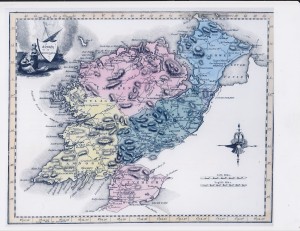
The19th Century Landlords of Greater Buncrana (The Civil parish of Lower Fahan) by Gearoid Mac Lochlainn.
Finley Dun, who in 1879 after his travels in the USA authored the book “American Farming and Food”, was requested by the Times to inquire into the subjects of land tenure, estate management and the condition of tenants and labourers in Ireland. That he undertook in the winter of 1880 setting out to travel the country and on 31st December he found himself in Buncrana where at the fair being held on that day he talked to a number of people about local conditions and afterwards wrote the following:
A 19th century visitor to Donegal though that the landlords in the Buncrana area were ‘unreasonable, despotic and sometimes short-sighted’
“A considerable number complain of repeated advances of their rents. They plead that they dare not break up the superabundant bog, stock the heather and huge boulders out of the mountain side, or otherwise make improvements without risk in a year or two of the reclaimed land being charged as cultivated land, its rent being probably increased three or four fold. Mr. Mc Glinchey who held under lease at £14 : 10s is recorded to have made improvements variously estimated at £600 to £800. When last year other tenants had their abatement he was passed over and told that his rent should be £42. ‘Would any man reclaim bog or build houses after that robbery?’ warmly exclaims my informant.
Instances are cited of men with good coats and hats met at market by landlord or agent and told that such evidences of prosperity show that they can bear another rise. A new coat of thatch or a fresh whitewashing of the house has often, I am assured, brought a revaluation. Even if such cases are only occasional and exceptional they shake confidence and paralyse enterprise.
Some of the Ennishowen landlords have been unreasonable, despotic and sometimes short-sighted. The late Daniel Todd, before dividing and selling his estates, raised the rents to 30 and even 70 per cent over Griffith´s Valuation, small regard being given to the source from which the enhanced value accrued. One section of this estate close to Buncrana, bought by an Englishman, with a rental of about £1500, is understood to be 50% above Griffith’s valuation. Under accumulated arrears from which they cannot extricate themselves, some of the poorer mountain tenantry are hopelessly dragged down.
Captain Mc Clintock has a rental of about £1700. Combining against enhanced rents and refusing lesser reductions tardily offered his tenants have recently settled up, receiving all round a reduction of five shillings in the pound.” [1]
Who were these landlords perceived by the people of Buncrana to stifle their every effort to improve themselves?
The Planters – the Chichester family
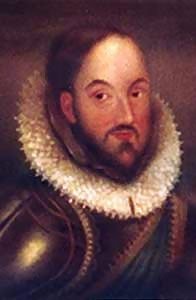
When Cathaoir O´Dochartaigh [Cahir O’Doherty] discovered that siding with the English in the Nine Years War did not bring the expected results he rose in a senseless doomed rebellion which provided the Lord Deputy, Arthur Chichester, with the opportunity to further enrich himself.
After the rebellion was crushed there was a mass seizure of native owned land in what is known as the Plantation of Ulster. Chichester was granted all the lands of Inishowen, except those held by the new, Protestant, state Church. Chichester was now the greatest land holder in Ireland and that vast wealth passed down through his collateral descendents until, at the turn of the nineteenth century, it was in the hands of George Chichester, 2nd Marquis of Donegall.
Due to an extravagant lifestyle and heavy gambling George Chichester ran up huge debts and now the pigeons were coming home to roost. As he did not have the wherewithal to satisfy his creditors he was interned in debtor´s prison in 1795 from which he had to be bailed out by his future father-in-law, a very shady lawyer who as a condition for paying his debts demanded that Chichester marry his illegitimate daughter and then together with his son,“a smart blackguard” in the words of a family acquaintance,[2] exploited that relationship to the utmost.[3]
The Chichesters originally arrived in Donegal with the large land grants given to Arthur Chichester, the Lord Deputy of Ireland in the Ulster Plantation.
But the skies were still not clear. To the money lenders from whom he had borrowed as much as £50,000 (about €4,000,000 in today´s money) he had given bonds with his Inishowen property as security and now he put great effort into trying to outwit the hawks who were hovering overhead watching for any opportunity to recover their money.
He needed ready cash and he needed it now. His household furniture was put up for auction and he sold 1000 year leases with only a nominal rent to anyone who could come up with that cash. Among the leases were those of the Manor of Buncrana and those who came forward with the money were Harveys and Isaac Todd.
The Russian Connection
Thomas Harvey was a partner in one of the biggest British merchant companies in the Empire of Russia based in St. Petersburg. It was involved in the import-export trade sending iron, grains, tallow, hemp, flax and linen etc. to Britain, much of it to be re-exported around the world at a very handsome profit, and importing into Russia machinery and luxury goods from the British Empire. In 1797 this company was the largest British merchant company in St. Petersburg [4] and in this same year its senior partner died.
The Harvey family made a fortune as British merchants in the Russian Empire and used some of the profits to buy up lands in Inishowen.
He was Archibald Ross a native of Derry but resident in Russia. He was a very wealthy man and in his will made in 1785 he states:-
“I give and bequeath the whole residue and remainder of my estate and effects wheresoever situated or invested to Archibald Paris, son of my partner John Paris of London, and to my partner Thomas Harvey of St. Petersburg to be divided in equal shares between them, each one half, and in case of the death of one of them before my demise my will is that the survivor of them shall enjoy the whole of my fortune.”
In fact both of them survived Ross and Thomas who had married Archibald Paris´s sister in 1789 used some of his inherited fortune to buy up townlands in Inishowen.[5] Perhaps he was uncertain about the future and was hedging his bets as Catherine II (the Great) was beginning to put pressure on British commercial interests in Russia, a policy followed by her successors.
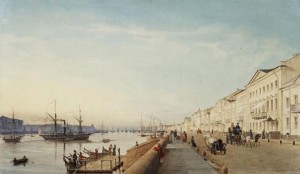
Up until then Britain enjoyed favoured nation status which Catherine considered was becoming less and less advantageous to Russia. She began to increase the tariffs on British imports and ordered Russian merchants to demand higher prices for the raw materials that they were selling.
Thomas seems to have disengaged from business in Russia about 1800 because after that date his last two children were born in England whereas the first five were born in St. Petersburg. Also in the family he became known as Thomas Harvey of Mintiaghs where he had built a hunting lodge although he spent very little time there apart from holidays.
Thomas died in 1819 and his will states:- “to son John, his heirs and assigns for ever, lands in the Barony of Inishowen.” [6] This John, the eldest son, who was born in St. Petersburg married his first cousin, the daughter of the above mentioned Archibald Paris. First cousin marriages are legal in Britain and this became quite common among the moneyed classes when marriages were arranged to make sure that family wealth remained in the family.
This is the John Harvey whose name appears as the “Immediate Lessor” for a number of townlands in Griffith´s Valuation 1857 although he had died the previous year. He was succeeded by his eldest son Edward Henry. The year before Finley Dun visited Buncrana the following notice appeared in the newspapers:
“Sale. Offers open up to 4th March 1879. Estate of Edward Henry Harvey, a Lunatic. . William Marsh Harvey and Rev. Frederick Mortimer Harvey – owners”.[7]
The American Connection.
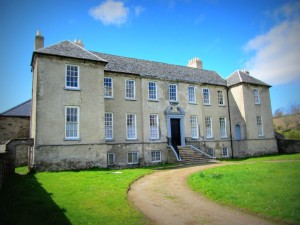
Robert B. Harvey (a distant cousin of the former) up until 1788 went by the name of Robert Bateson. In that year he inherited a large fortune from his maternal uncle David Harvey but on the condition that he take the extra surname “Harvey”. David had amassed that fortune in transatlantic trade mostly in Irish linen which he exported from London to America. Robert now used some of the money to buy up leases in Donegal and when his son, George who then owned the Inishowen estate, died in1881 just 17 days after Finley Dun visited Buncrana, the family had acquired 39 townlands in the county.
Isaac Todd brought his money from Canada. Originally from Coleraine, where the family of Scottish descend had settled in the 1600´s, he emigrated to Canada and by 1765 was in Montreal where he set up as a fur trader. Some eleven years later in 1776 he established the trading company, Todd & McGill, in partnership with James Mc Gill, a Scottish merchant who had also settled in Montreal and whose will in 1813 left a bequest of money and land to set up McGill College later to be instituted as McGill University in 1821.[8]
After the confiscation of Inishowen under the Ulster Plantation in 1609, the townlands of the lower Crana valley were leased to Henry Vaughan who lived in the O´Doherty castle (Keep) around which had grown up a settlement at the Bun (bottom, mouth) Cranncha (of the Crana river).
The Todd family made their money across the Atlantic in Canada and America. In Deonegal they got into a wrangle over lands and leases with the powerful Chichester family.
In 1718 George Vaughan built a new “castle” and moved the village out of his sight into the townland of Ardravan, to a position where the name no longer accorded with the reality, as he wanted to develop pleasure gardens where it had stood. When the Vaughan family died out in 1763 the transplanted town of Buncrana and surrounding townlands changed hands with dizzying frequency through leases, releases, partnerships, renting, sub-renting, mortgages and bankruptcy involving people of means from Derry, Belfast and various parts of England until Isaac Todd appeared on the scene in 1801.
His association with Buncrana came through his nephew, William Thornton Todd, married to Wilhelmina Patterson the daughter of a Derry merchant, Daniel Patterson, who had been leasing townlands in the area.[9]
When the latter died in 1799 William Todd acquired a peppercorn 1000 year lease of Ardravan, including Buncrana town, Ballymacarry, Ballymagan, Tullyarvan and Tullydish along with Buncrana Castle and the salmon fishery for £10680.[10] The money probably came from uncle Isaac because the properties were turned over to him in 1801 and he took up residence in Buncrana Castle for some years even becoming First Lieutenant 3rd Company of Buncrana Cavalry in 1811.[11]
Isaac never married and although he had an illegitimate daughter when he died in 1819 he left his estate to the aforementioned nephew, who built the courthouse and jail in Buncrana at a cost of £1300.[12] The latter’s son Daniel, the Grand Secretary of the Grand County Donegal Orange Lodge,[13] who lived in Buncrana Castle is the person referred to by Finley Dun. When he died his brother, James Henry Todd of Westbrook, inherited the estate and also the estates of his second cousin Lieutenant-General William Thornton of Muff.
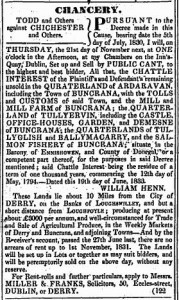 In consequence he had to take the surname of Thornton in addition to and after the surname Todd, authorised by royal licence dated 8th September 1866.[14]
In consequence he had to take the surname of Thornton in addition to and after the surname Todd, authorised by royal licence dated 8th September 1866.[14]
Mr. Todd may have thought that his family line would enjoy a 1000 year lease but if he did he failed to reckon with Sir George Augustus Chichester 2nd Marquis of Donegall, who had spent a lifetime wrangling with creditors, money lenders and other people of little importance and who now disputed Todd´s lease backed by his army of lawyers. The outcome may be judged from the inserted newspaper advertisement published in the months of October and November 1833.
As Finley Dun states above Daniel Todd divided what was left of his estate and sold off 884 acres through the Encumbered Estates Court on the 30th April 1850 to clear a debt of £20809 [10] and the remaining 295 acres in the townland of Tullyarvin were inherited by the above mentioned brother in 1866.
The English man referred to was Thomas Alexander as is clear from the following:-
“The Marquis of Landsdowne, on Friday night, laid upon the table of the House of Lords the following return:-
‘Names and residences, as far as can be ascertained, of the English and Scotch purchasers of lands sold by the Encumbered Estates Court, referred to in the report of the Commissioners to the Lord Lieutenant of Ireland, bearing date the 3rd day of May 1851 and setting forth the amount of money allowed to each of such purchasers out of their purchase money, in discharge of encumbrances heretofore vested upon the lands purchased by such encumbrancers’.”[15]
The first names on the list were Daniel Todd as seller and Thomas Alexander as purchaser whose address is given as York Place, Portman Square, London. But in fact Thomas was born and reared in Limavady, 5th son of a family of Scotch planters who came to Ireland in 1615. He moved to London where he established himself as a timber merchant and became quite prosperous, so prosperous indeed that he was able to purchase Frowick estate in Essex [16] and in the early 1830´s buy leases in the Buncrana area.
When he married in Dublin on 20th February 1835 the event was recorded in the papers as the marriage of Thomas Alexander of Buncrana and Frowick in Essex. However he continued to live in London, his children were born in Marylebone, Middlesex, and he died at 70 Lancaster Gate London in 1867.
But why Buncrana? Firstly because Chichester´s continuing need for cash led to his granting “perpetual leases”, basically the sale of townlands in his Inishowen property. Secondly we recall that the Todds came from the same general area. All the above mentioned families were interconnected either through marriage or descent as were those we still have to consider.
The old adage “birds of a feather flock together” can apply not only to the Irish poor who congregated in ghettos in British and American cities but also to the wealthy planter families whose search for rich pickings were mainly responsible for the plight of the former.
Ardravan, including the town of Buncrana, as advertised in the above newspaper extract, together with the townlands of Ballymagan, Cleenagh, Drumaderry and Trillick was bought by William Kerr Mc Clintock, a Derry merchant who resided at Green Haw House, later rebuilt as Hampstead Hall, in Shantallow on the Culmore Road. Pigot & Co’s Provincial Directory of Ireland 1824 lists William Kerr Mc Clintock as owner of a “Wholesale Hardware, Jewellery, Trimming and Hosiery Warehouse” in the Diamond.
In 1818 he married Sarah, daughter of William Macky also a merchant in Derry and a next door neighbour. William Kerr died in 1841 and so it is Sarah who appears in Griffith´s Valuation as immediate lessor of the said townlands comprising some 1862 acres except Trillick which was left to Ellen their oldest surviving daughter. By the time when Finley Dun visited Buncrana Sarah also had passed away and the lands were then in the hands of her son, the Captain Mc Clintock to whom he referred.
The middlemen
These were the main landlords but they were not the only people to join the feeding frenzy. There was another group who wanted a piece of the action – the middlemen. Thomas Douglas Bateson, a land agent who managed the estate of his cousins, the Bateson Harveys, in his evidence to the Devon Commission stated “the lands up to 1837 were in the occupation of middlemen. At that time a great portion fell into the hands of the proprietor”, but not all as is evident from Griffith´s Valuation.
One such middleman was Dr. Francis Rogan, a surgeon in Derry who in 1832 resided at 13 Pump Street but by 1846 had moved to St. Columb´s Court. A man of great energy he held one of the largest provincial practices in Ireland, was physician and surgeon in Derry goal, surgeon in the County Infirmary, physician at Derry Lunatic Asylum and medical officer of the Fever Hospital.[17]
Most middlemen for large landlords were businessmen and smaller landlords in heir own right.
But he was also an entrepreneur and a landlord. He had extensive commercial interests in Castlefinn, most of which he owned and which he regularly visited by boat. On the river bank he had a corn store and a quay built at the head of navigation on the Finn-Foyle river system from which a large quantity of grain was shipped to Strabane and Derry.[18] Further he was involved in the cotton industry.
In 1848 the Londonderry Journal reported that “280 looms are at constant work upon Dr. Rogan´s estate at Castlefinn.” Obviously a very prominent business man, in 1845 he was one of those who gave evidence on the merits of Derry, Armagh and Belfast as the site of the new university which in fact would become Queen´s University Belfast.[19]
And yet he could not resist Inishowen. In the area under consideration he held one townland under the Bateson Harveys and of that the Rev. E. Mc Ginn (later Bishop Mc Ginn) spoke to the Devon Commission in these words:- “ with respect to recent improvements , in one case the people went up to the side of the mountain in the townland of Meenamullaghan, and cultivated the land; they took that at £20.
The landlord’s son went up the hill and looked down at the improvements they had made and raised them to £42 and served them with ejectments to leave the places or come up with him to the £42.” This was the son of a middleman and happened about 1835. In Griffith’s Valuation the immediate leesor of Meenamullaghan is recorded as “Reps. of Dr. Rogan” who had died 2 years previously. When Finley Dun visited Buncrana it was back in the hands of George Harvey [20].
The townland of Foffanagh was also in the hands of a middleman; in this case the Rev. Peter Benson Maxwell who also held under the Bateson Harveys. At the confiscation of Inishowen a Peter Benson was granted the lands of Elaghmore, Dundrain and Elaghbeg straddling the present day border.[21]
A descendant, another Peter Benson whose wife, Catherine Cary, inherited land in Birdstown purchased in 1718 from a relative of Catherine´s an estate in Faughanvale for £800. His granddaughter, Ann Benson, the only surviving descendant and heiress, married Richard Charleton in 1775 and he changed his name to Maxwell in order to inherit his uncles estates as the following extract from the “General Armory”[22] demonstrates:-
Maxwell of Birdstown, Co. Donegal; exemplified to Richard Charleton, Esq., upon his assuming, by royal licence, 1790, the name of Maxwell instead of Charleton, in compliance with the testamentary injunction of his maternal uncle William Maxwell, Esq., of Birdstown.
When the now Richard Maxwell died in 1822 his son, the above mentioned Rev. Peter Benson Maxwell, who was rector of Desertegny, inherited all his lands in Inishowen, Faughanvale and Tyrone, some 8885 acres but it seems that it wasn´t enough and so we find him in Griffith´s Valuation (1857) as a middleman, immediate lessor of Foffanagh with an extra 460 acres. However by 1880 when Finley Dun was asking questions at the fair in Buncrana it was back in the possession of George Harvey. [20]
Kinnego was also leased out by the Bateson Harveys, in this case to the Harts of Kilderry. This family was very much involved in military affairs. They first burst onto the scene in Inishowen when Captain Henry Hart was victim of a ruse by Cathaoir O´Dochartaigh to obtain arms from Culmore Fort for his rebellion. At first under a cloud of suspicion he managed to re-ingratiate himself through the good offices of Chichester who had benefited greatly from the rebellion.
In 1609 Henry was in possession of lands lying along the Foyle from Ballynagard to Ardmore and two year later he was granted 1000 acres as an undertaker in the Plantation of Ulster. [23] Around 1679 his grandson, another Henry, built the house at Kilderry and it became the family residence though rebuilt, modified and added to over the years until finally sold in 1944. In 1816 George Vaughan Hart inherited the family property. His military career had seen him participate in the American War of Independence, afterwards in the West Indies and then on to India where he picked up booty to the value of some £4000 after one of the campaigns. However it all ended in disgrace when he was court-martialled for embezzlement and suspended from his position.[24]
Nevertheless in 1800 he returned to Ireland a very rich man having made money in India and the disgrace did not prevent him from being appointed General in the Northern Command and continuing in the military until he retired in 1815. In the meantime his attention had turned to politics and he was elected MP for Donegal on an anti-Catholic ticket. He was the vice president of the Londonderry Brunswick Club formed to deny Catholics the right to be elected to the British Parliament.[25] The General retained his seat until he died in 1832. He was a man who liked things and persons in their “proper” place as the following sentences taken from his will would illustrate:-
“Whereas I have reason to think that my eldest son John Richard James is engaged or actually married to a daughter of James Fisher of Duke Street, St. James´, London, tailor, and by such connection would disgrace himself and his family, I am determined to deprive him of the estate limited to him should he have so married or hereafter do so. Therefore should he have married etc my estate is to go to the next, just as if my son John were dead, and without issue and I revoke all bequests to him and leave to him instead £3000 to be vested in and under control of my executors to be paid in same manner as to my son Edward Hart” [26]
John did not proceed to disgrace himself and the family, although he left Miss Fisher with a son, and so did inherit Kilderry and the other Hart properties but he did not long outlast his father dying in 1838. A younger brother, also called George Vaughan Hart, now inherited the family properties and it is he who appears in Griffith´s Valuation as the immediate lessor of Kinnego. In 1876 he is listed as the proprietor of 6599 acres in Donegal and 434 acres in Derry.
It is clear then that the finance to buy or lease these lands came from the wider world and Inishowen was seen as a good place to invest that money. All of this, of course, was above the heads of the ordinary people of Buncrana but they also had their relationship with the wider world.
As seasonal migrant workers they left their sweat in the fields of Scotland and England trying to scrape together the money for the rent which would keep their “betters” living in the luxury to which they were accustomed while they as tenants derived very little of the comforts of life. With the passing years more and more joined the throngs that were sailing down the Foyle on their way to the Americas in the hope of a better life.
Conclusion
For the landlords Inishowen was just an investment. They treated with contempt the people whose ancestors had lived in the land since the end of the last ice age, some 11000 years ago.
For the landlords Inishowen was just an investment. They treated with contempt the people whose ancestors had lived in the land since the end of the last ice age.
Their attitude could best be summed up in the words of a member of another branch of the Harvey family, George of Malin Hall who died in 1773. He claimed that he found the people ´uncivilized, ignorant and barbarous´ but that he ´tamed them and introduced order, settling more difficulties by the whiskey bottle and horsewhip than by a mittemus or the beadle´[27] and this at a time when the Penal Laws were in their full rigor and education was legally forbidden to those same people. That that attitude continued into the 19th century and the people kept in a state of subordnance is clear from an article reported in the Belfast Newsletter in January 1829 which stated the following:-
“On Monday last, a most numerous meeting of the Protestants of the County of Donegall, was held in the Square of Lifford, for the purpose of petitioning Parliament against further concessions to R. Catholics. It had been originally arranged that the meeting should be held in the Courthouse, but the vast numbers of those who attended rendered this plan utterly impracticable. Unlike the semi-barbarian hordes that for the most part constitute the average material of “civil and religious liberty” meetings, the meeting at Lifford presented an influential assemblage of wealth and respectability and intelligence”.
There on the platform among other speakers were John Hart and Daniel Todd.
Notes
1 Finley Dun “Landlords and Tenants in Ireland” Longmans Green and Co. 1881
2 Drennan-Mc Tier letters. Vol.3 edited by Jean Agnew. Martha Mc Tier´s letter of 4th June 1803 to her brother.
3 W. A. Maguir, Living like a Lord: the 2nd Marquis of Donegall 1769-1844.
4 Marie-Louise Karttunen “Making a Communal World: English Merchants in Imperial St.Petersburg” Helsinki University Press 2004.
5 Rev. F.L. Molloy 1814 Statistical Account – Parish of Clonmany.
6 Will appears in “Visitation of England and Wales-Notes Vol.I”
7 Donegal Archives Lifford
8 Nearly 200 Years of History. www.mcgill.ca/about/history.
9 The Registry of Deeds, Henrietta Street, Dublin
10 Incumbered Estates Commission (Ireland) Return to House of Commons for the sales up to the 1st January 1852
11 Belfast Newsletter 21st June 1811
12 Samuel Lewis A Topographical Dictionary 1830´s Buncrana
13 House of Commons Papers Vol.XV: Report from the Select Committee on Orange Lodges 1835
14 Burke´s Landed Gentry of Ireland 1912 (page 698)
15 Belfast Newsletter 23rd July 1851
16 1841 Census of England and also Rev. Charles Rogers “Memorials of the Earl of Sterling and the House of Alexander” Vol. II Edinburgh 1877
17 Dublin Almanack 1847 and Thom´s Directory of Ireland 1850
18 Lieutenant Wilkinson´s Statistical Report of the Parish of Donoughmore 1836 (Castlefin)
19 Commission to enquire into site for college in Ulster, Ireland; 1845. Pages 10-18.
20 The Cancelled Books which were a continual updating of Griffith´s Valuation can be examined at the Valuation Office, Irish Life Centre, Lr. Abbey St., Dublin.
21 List of those holding land under Sir Arthur Chichester in 1622 as it appears in “That Audacious Traitor” by Brian Bonner. P. 221
22 Sir Bernard Burke (Ulster King of Arms) The General Armory of England, Scotland, Ireland and Wales. Harrison, London. 1884
23 Henry Travers Hart. The Family History of Hart of Donegal. Michell, Hughes & Clarke, London. 1907
24 PRONI. Introduction to Hart Papers D3077
25 The History of Parliament: The House of Commons 1820/1832. Ed. R.D. Fisher 2009. Member Biographies.
26 Will of G.V. Hart 1832. (The Family History of Hart of Donegal)..
27 The Harvey Families of Inishowen, Co. Donegal and Maen, Cornwall by G.H. Harvey. (Copy available at County Library, Letterkenny)